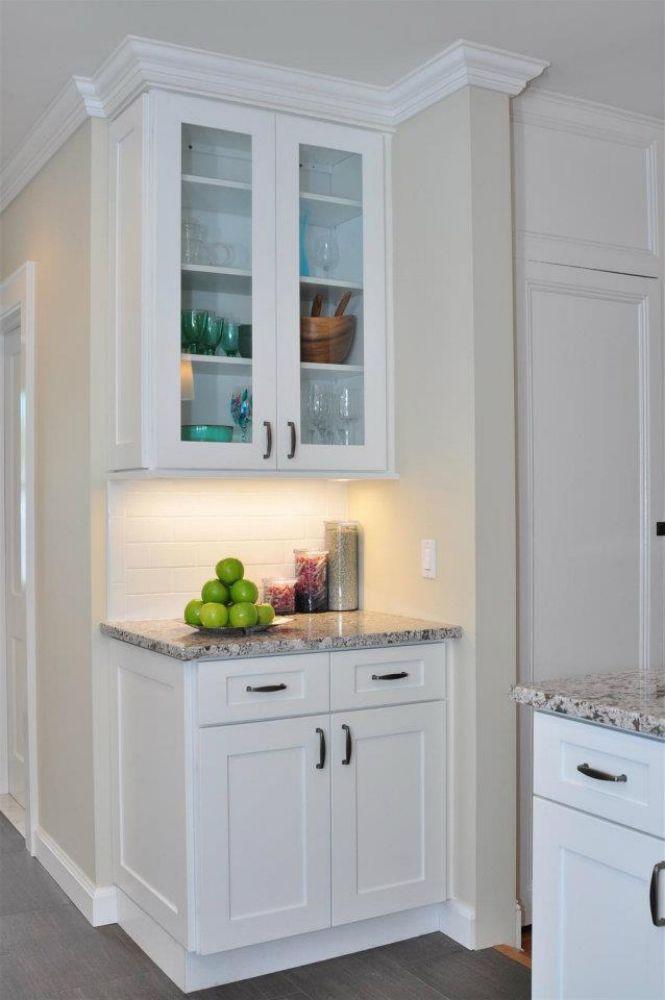Understanding Forevermark Petit Sand Cabinets
Forevermark Petit Sand cabinets are known for their versatile neutral finish, blending soft beige and sand tones that complement a wide range of kitchen designs. These cabinets are crafted with high-quality materials and a durable finish, making them both functional and visually appealing. While they come with a satin-like sheen from the factory, many homeowners wonder if polishing them can enhance the shine even more. Before considering polishing, it’s essential to understand the type of finish applied and how it responds to maintenance methods.
The Factory Finish On Forevermark Petit Sand
Forevermark uses a multi-step finishing process designed to protect the cabinetry from moisture, scratches, and everyday wear. Petit Sand cabinets typically have a semi-matte or satin finish rather than a glossy one. This type of finish is chosen because it hides fingerprints, smudges, and minor imperfections better than high-gloss finishes. Polishing can sometimes alter this carefully applied layer, so it’s crucial to know whether additional shine is beneficial or potentially harmful to the surface.
Can Polishing Improve The Look Of Petit Sand Cabinets?
Polishing can give cabinets a slightly enhanced glow, especially when using gentle, non-abrasive products. However, the goal of polishing these cabinets should not be to transform them into high-gloss surfaces, as the original finish was designed for a softer, natural appearance. Over-polishing or using the wrong products can damage the protective coating, leading to discoloration or premature wear. For Petit Sand cabinets, polishing is less about creating gloss and more about refreshing the surface, restoring smoothness, and maintaining a clean, vibrant look.
Recommended Polishing Products For Petit Sand Cabinets
When polishing Forevermark Petit Sand cabinetry, it’s essential to use products designed for wood and furniture finishes. Some safe options include:
-
Microfiber cloths – Ideal for buffing surfaces without scratching.
-
Water-based cabinet polishes – Provide light shine without leaving waxy buildup.
-
Mild furniture oils – Add richness to the finish while protecting against dryness.
-
Homemade vinegar-water solution (diluted) – Works well for cleaning before polishing.
Avoid silicone-based sprays or abrasive cleaners, as they can leave streaks, residues, or even strip the protective coating.
Step-By-Step Guide To Polishing Petit Sand Cabinets
If you decide to polish your Forevermark Petit Sand cabinets, follow these steps to ensure safe application:
-
Clean First: Wipe down cabinets with a damp microfiber cloth to remove dust and grease.
-
Dry Thoroughly: Ensure no moisture remains before applying polish.
-
Test A Spot: Apply a small amount of polish on an inconspicuous area to check results.
-
Apply Polish: Use a soft cloth to rub the polish in gentle, circular motions.
-
Buff The Surface: Use a clean microfiber cloth to buff the area, enhancing the natural sheen.
-
Repeat As Needed: Only polish every few months to avoid buildup.
This process helps maintain the smoothness of the finish without overwhelming the original look.
How Polishing Compares To Cleaning
Many homeowners confuse polishing with cleaning. Cleaning removes dirt, grime, and grease, which restores the cabinet’s original appearance. Polishing, on the other hand, enhances shine and provides a layer of protection. For Forevermark Petit Sand, routine cleaning is more important than polishing, as the finish was designed to look elegant with minimal upkeep. Polishing should be reserved for times when the surface begins to look dull or dry.
Potential Risks Of Over-Polishing
While occasional polishing can refresh cabinets, doing it too often may lead to unintended consequences. Risks include:
-
Residue Buildup: Excess polish can create sticky layers that attract dust.
-
Finish Damage: Strong products can break down the protective topcoat.
-
Uneven Shine: Overuse may result in blotchy areas with different levels of sheen.
-
Color Alteration: Harsh chemicals can discolor the Petit Sand tone over time.
These risks highlight the importance of moderation and using only gentle, tested products.
Alternatives To Polishing For A Fresh Look
If your cabinets look dull but you want to avoid polish, consider these alternatives:
-
Deep Cleaning: Use warm, soapy water to cut through grease and restore brightness.
-
Buffing With Dry Cloth: Sometimes, buffing alone brings back a natural sheen.
-
Reconditioning Oils: Light oils can nourish the wood and refresh the finish.
-
Cabinet Waxing: A thin coat of natural wax can protect surfaces and subtly enhance shine.
These methods help preserve the cabinet’s natural finish while still giving them a renewed appearance.
Long-Term Maintenance Of Forevermark Petit Sand Cabinets
To keep cabinets looking beautiful for years, polishing should be only one small part of an overall maintenance routine. Key practices include:
-
Wiping spills immediately to prevent staining.
-
Cleaning weekly with a mild soap-and-water solution.
-
Avoiding direct sunlight exposure to prevent fading.
-
Using cabinet liners inside drawers and shelves for added protection.
-
Dusting regularly to prevent buildup.
By combining these habits with occasional polishing, your Petit Sand cabinets will maintain their timeless beauty.
Conclusion
Forevermark Petit Sand cabinets are designed with a semi-matte finish that balances beauty and practicality. While they don’t require polishing for everyday upkeep, occasional polishing with safe, non-abrasive products can enhance their natural appearance and maintain their smooth surface. Homeowners should be mindful not to over-polish, as the original finish is engineered to provide long-lasting durability and resistance to wear. When used sparingly and correctly, polishing can refresh the look of Petit Sand cabinets without compromising their integrity, ensuring they remain a stylish and functional part of your kitchen.
Frequently Asked Questions
Q1: Do Forevermark Petit Sand cabinets come with a glossy finish?
A1: No, they come with a semi-matte or satin finish, which is designed to look elegant while resisting fingerprints and smudges.
Q2: How often should I polish my Petit Sand cabinets?
A2: Polishing should only be done every few months or when the surface looks dull. Regular cleaning is more important for maintenance.
Q3: What type of polish is safe for Petit Sand cabinets?
A3: Use water-based cabinet polishes, mild oils, or microfiber cloth buffing. Avoid silicone-based or abrasive cleaners.
Q4: Can polishing make Petit Sand cabinets look glossy?
A4: Polishing can add a subtle shine but will not turn the cabinets into a high-gloss finish, as the original design emphasizes a soft, natural look.
Q5: Is polishing necessary to maintain the durability of the cabinets?
A5: No, the finish is already designed for long-term durability. Polishing is optional and should only be used to refresh the appearance, not as a protective necessity.

